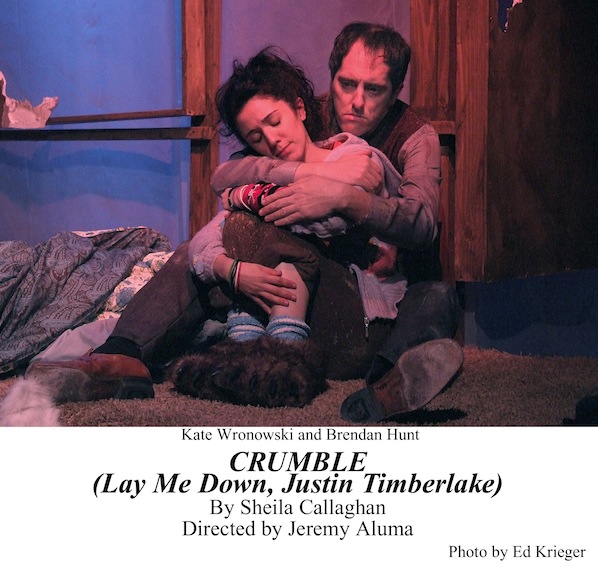Every night before I go to bed I say a little prayer and thank the universe that we have indie theatre. Without independent art we would not have a play like Crumble. It is the fascinating story of a mother, her strange daughter, Janice, and their house that is slowly deteriorating. Despite difficult dialogue, the show ultimately succeeds in creating a world with intriguing ideas and unique perspective.
Life after death is something we all wonder about, but nobody knows what it is or even if it is. What about life after death for those who keep living? Losing a loved one is not easily done, especially when that loved one is the patriarch of a family, and his death is sudden and untimely. Playwright Sheila Callaghan explores the human condition in a unique and intriguing fashion. There's a fine line between being enchantingly odd and isolating yourself from a wide audience. At times, the cute, wacky dialogue was superfluous (reminiscent of Diablo Cody). However, the spirit of the play is wonderfully weird. It's that quirky quality that sets the play apart from it's contemporaries and makes it rather remarkable. So sure, some of the audience will be lost, but it's worth it. After a certain point, mainstream theatre (and cinema for that matter) just turns into a gray paste of mediocrity.
Perhaps the most impressive thing about Crumble is how congruent all the ideas and concepts were. Justin Timberlake and Harrison Ford show up abruptly in hallucinations, and it makes perfect sense. Director Jeremy Aluma should be commended for his eloquent work in facilitating the author's bizarre perspective. That bizarre perspective would not be the same without the magnificent set that did much more than you would expect in such a small space.

The greatest redeeming quality in the show was the advent of The Apartment as a literal character in story. The house the family lives in is a unifying force between the communication avoidance of Janice and her panic-attack-stricken mother. Brendan Hunt employed the role of The Apartment with artful nuance. Mother (as referred to in the program and script, but often called Clara onstage) had the weight of the show, and the world, on her shoulders. Carrie Keranen played the part with a masterful balance of strength and weakness. When I first saw Kate Wronowski spastically dancing, I was afraid that she would be unconvincing as the eleven year old, Janice. Quite the opposite, Wronowski proceeded to be endearing and capture the essence of young, disturbed adolescent. Alyssa Preston added support and a well-accented performance as the lonely aunt, Barbara.
Among the many peculiar conceptual elements that ran rampant through the course of Crumble, were unrelenting psychological elements. The deconstruction of the house becomes internalized though the individuals who inhabit it. The play is about trying to pull everything together while falling apart. Death is as contagious as the common cold. It spreads like a cancer from loss and attacks the intrinsic body of its victims. And conquering that disease, rising above that adversity, fighting for your life is not something easily done while the world around you gradually crumbles.
For tickets and information, go to http://www.sacredfools.org/